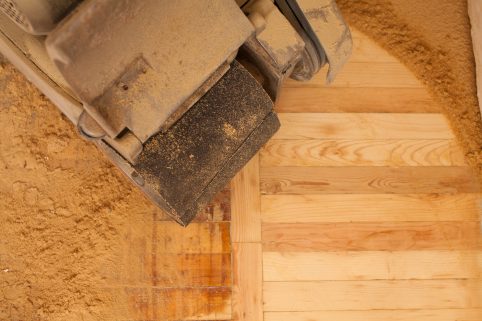


Dust management today’s HOT TOPIC
Dust management has been a major focus in the flooring industry since regulation required to reduce the amount of (fine) dust that gets emitted into the environment. New laws and heath regulations pushed innovation and resulted in the development of high quality dust extraction systems. Innovative vacuum systems with accessory dust bags found their way to the professionals and by law a flooring professional is now obligated to use high quality dust care systems. Dust management has been a hot topic for many years and it still is.
Dust can easily be called the number one enemy of the flooring professional, especially for those who work daily with grinding and/or sanding equipment. Dust is a hazard which has a negative effect on machines and other objects in the working environment (especially in domestic situations), but also on human health. The most dangerous dust is the invisible kind called fine dust and someone who is exposed to fine dust can later suffer from serious health issues.
As the dangers and inconveniences of dust and fine dust are clear it is no wonder that companies push innovation and development of dust management solutions.
And so did we…!
Central dust extraction
Floor treatment is often done by dry grinding or sanding which means the dust particles are launched into the air because of the swift movement of the machine working parts. There have been great developments for better dust suction and containment systems, but the dust caption and transport within the machine has nearly remained unchanged. This is primarily due to the commonly used drive systems which make central transportation of dust impossible.
Because of the unique construction of the Block-in Drive System it is possible to position dust suction at the bottom of the drive plate close to the working plates. The dust particles are then centrally transported to outside the machine into a vacuum system. The suction is much closer to the diamond or sanding tools which means that light particles are directly sucked away instead of landing on the surface or escaping the housing of the machine.